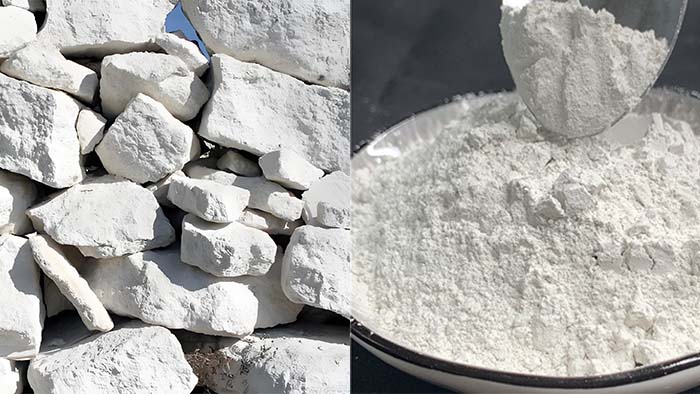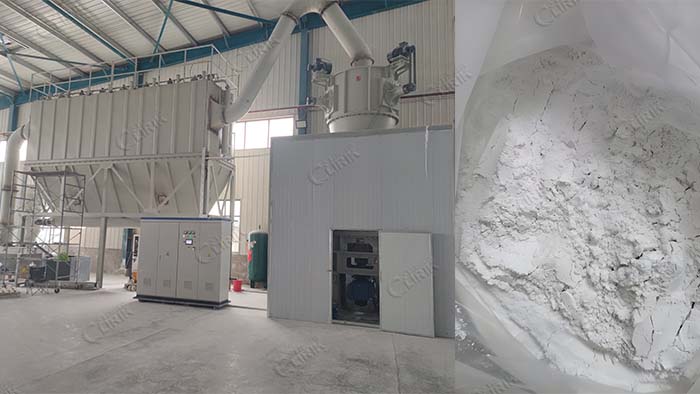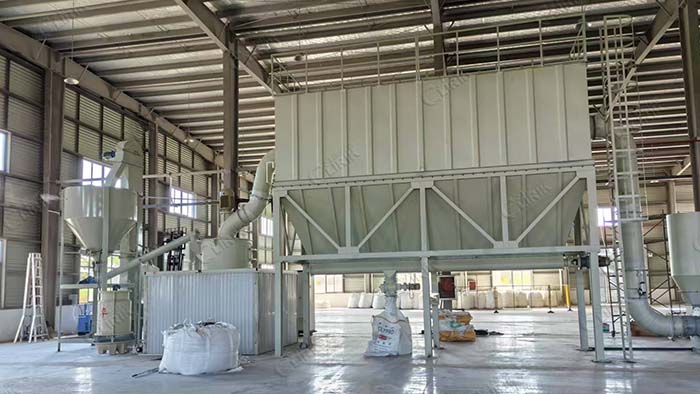Gypsum, a versatile mineral widely used in various industries such as construction, agriculture, and medicine, requires precise grinding to achieve the desired particle size for its applications. Clirik's HGM series ultra-fine grinding mill is specifically designed to meet this need, offering an efficient and reliable solution for producing high-quality gypsum powder. Here is a comprehensive guide to the grinding process of gypsum using the HGM ultra-fine grinding mill:

Initial Size Reduction: The raw gypsum ore is initially reduced in size using a primary crusher, such as a jaw crusher or hammer crusher, to produce smaller fragments, typically ranging from 10 to 30 mm in diameter.
Material Transportation and Feeding: The crushed gypsum is then transported via a belt conveyor or bucket elevator to a storage hopper. From the hopper, the material is fed into the grinding mill's main chamber through a variable-speed vibrating feeder, ensuring a consistent and controlled feed rate.
Ultra-Fine Grinding: Inside the HGM mill, the grinding process is initiated by the rotation of the main shaft and the grinding rollers. The rollers, driven by the centrifugal force generated by the rotating disc, move outwards and press against the grinding ring. The gypsum particles are caught between the rollers and the ring, undergoing intense pressure and shear forces that result in size reduction. The material is ground multiple times as it passes through the gap between the rollers and the ring, achieving the desired fineness.

Air Classification: The ground gypsum powder is carried by a stream of air generated by a high-efficiency blower into a classifier. The classifier, equipped with a high-speed rotating impeller, separates the fine particles from the coarse ones. The fine particles, which meet the required fineness, are carried by the air stream to the next stage, while the coarse particles are returned to the grinding chamber for further grinding.
Powder Collection and Packaging: The fine gypsum powder is then collected in a cyclone separator, where the powder is separated from the air stream and discharged through a rotary valve. The collected powder is then conveyed to a packaging machine or storage silo. To ensure minimal dust emission and a clean working environment, a pulse jet dust collector is employed to capture any fine particles that may escape with the exhaust air.

Quality Control and Environmental Considerations: Throughout the grinding process, the HGM mill operates under a closed-loop system, which not only ensures efficient grinding but also minimizes dust emission. The system is designed to meet strict environmental standards, with the pulse jet dust collector effectively reducing dust levels in the exhaust air.
The HGM series ultra-fine grinding mill is capable of producing gypsum powder with a fineness ranging from 325 to 3000 mesh, with an output capacity of 0.4 to 45 tons per hour, depending on the specific model and the desired particle size. Its robust design, high efficiency, and low energy consumption make it an ideal choice for large-scale production of ultra-fine gypsum powder.
